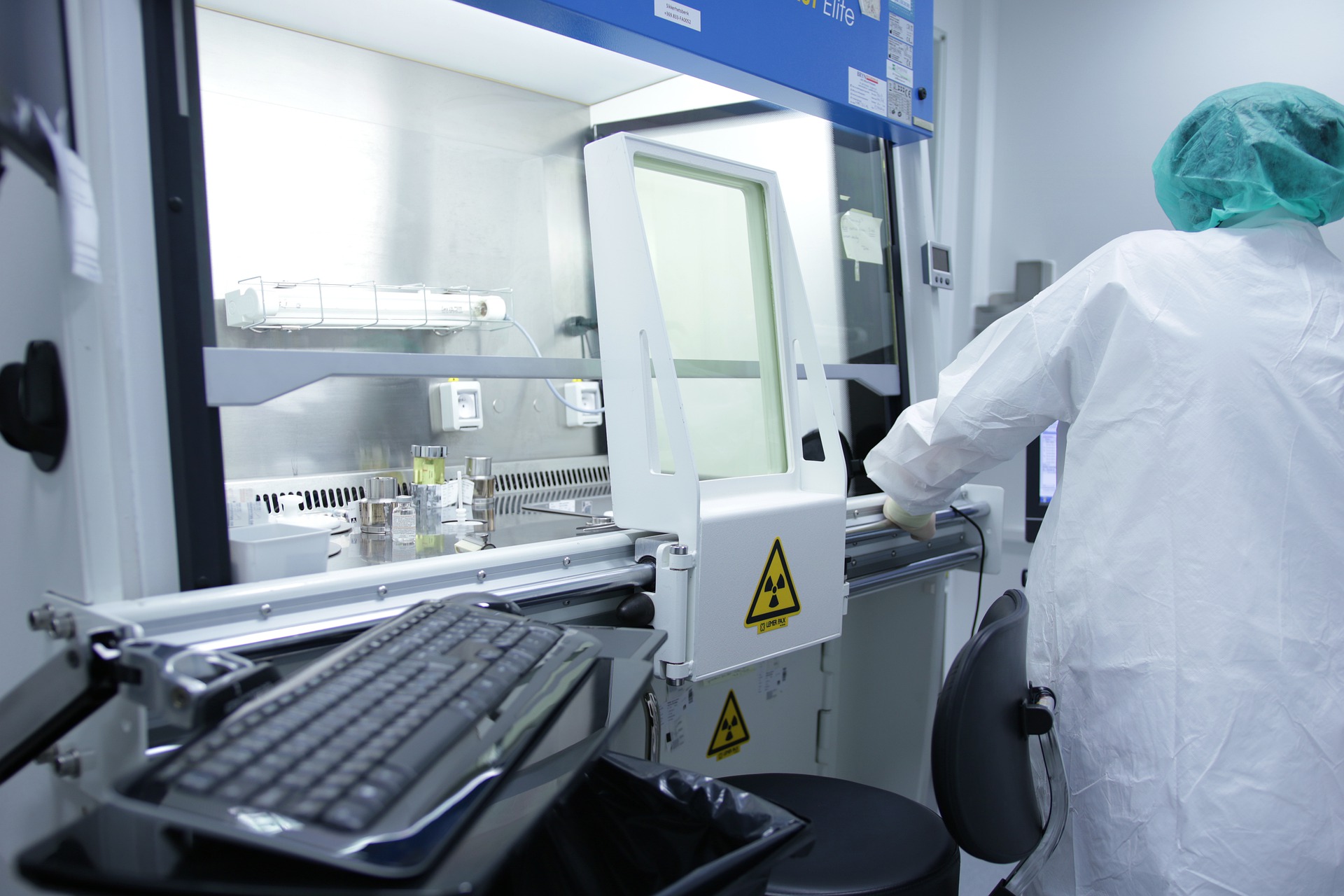With COVID-19 having dominated the headlines in 2020, the coronavirus pandemic will inevitably continue to be the biggest story in 2021, but hopefully for more positive reasons. This year will see the rolling out of much-awaited pandemic-ending COVID-19 vaccines. Both drug discovery and drug repurposing to manage and treat the disease will also continue as experts learn more about the virology and epidemiology of the novel SARS-CoV-2 coronavirus that wreaked havoc in 2020.
In other research areas, innovations in the pharmaceutical, medical device and biotech industries will benefit from approaches such as artificial intelligence (AI) and increased digitization.
The pandemic itself will also continue to spur innovations and changes such as greater shifts towards decentralized clinical trials and patient-centric approaches. There will also be more focus on digitization of research and development and manufacturing spaces to increase efficiencies and interconnectivity in the pharma, biotech and medical device industries.
1. COVID-19 Pandemic: An Evolving Era
The pandemic is expected to continue well into 2021 amidst the delivery and distribution of COVID-19 vaccines worldwide. Mass vaccination campaigns may be announced after people on priority lists — which include those living or working in long-term care facilities and frontline healthcare workers — are vaccinated. Lockdowns and closures will continue to have staged implementations as the vaccines are phased in.
Experts say that while restrictions may begin to be slowly lifted by late spring and into the summer, significant reversals won’t be seen until the fall or towards the end of 2021, and into 2022.
While BioNTech/Pfizer and Moderna have garnered FDA emergency use authorizations (EUA) for their COVID-19 vaccines, other vaccine contenders such as ones developed by the University of Oxford/AstraZeneca and Johnson & Johnson will be heading towards emergency authorizations and/or approvals as well in the coming year.
In addition to vaccines, there are handfuls of drugs currently being evaluated in clinical trials for the treatment of COVID-19. These include monoclonal antibody drugs, which are attractive therapeutic agents owing to their targeted specificity. Eli Lilly’s bamlanivimab and Regeneron’s monoclonal antibody cocktail REGEN-COV2 which consists of two monoclonal antibodies, casirivimab and imdevimab, were approved in 2020 for use in the treatment of COVID-19 patients.
Improvements to rapid diagnostic PCR-based tests including antigen tests, as well as antibody tests for detection of prior SARS-CoV-2 infection, will also be big this year. There have been some concerns over antigen tests due to their potential for false positive results. Despite this, the FDA recently approved the first over-the-counter, fully at-home antigen test for COVID-19. Developed by Ellume Therapeutics, the test is a rapid, lateral flow antigen test, which involves passing a liquid sample along a surface with detection antibodies. The test identifies SARS-CoV-2 protein fragments from nasal swab samples.
Reliable and rapid testing will continue to be a need next year as effective tracing and testing will be key to helping resolve the pandemic.
2. Decentralized Clinical Trials
With hospitals and healthcare centers having to operate at limited capacities and/or close down completely because of the pandemic, there were widespread disruptions to clinical trials as a result of COVID-19. According to a recent report, about 1,000 organizations reported trial disruptions in 2020. There was also an approximately 80 percent decrease in the number of new patients that enrolled in trials.
To maintain patient safety and trial integrity, the pharmaceutical industry had to turn to the adoption of remote or decentralized clinical trials (DCT), leveraging digital tools and virtualization platforms to conduct and monitor trials. Although DCTs and hybrid trials were trial options well before the pandemic, they were not as common or widespread as they have become today. DCTs went from being an option to being a necessity during the pandemic.
The shift to DCTs due to the pandemic was a huge topic in the industry in 2020 given the pressing need to quickly move to remote avenues of sample and data collection while protecting patient safety and trial integrity.
Xtalks hosted a number of on remote and virtual trials, delivering important information and key considerations to assist industry professionals in making the shift to DCTs.
Xtalks recently spoke with Bola Oyegunwa, PhD, vice president and head of virtual trials at Covance, about the present and future of DCTs.
Dr. Oyegunwa explains that COVID-19 has “fundamentally transformed the way that we’re going to conduct clinical trials moving forward, on many different levels and aspects. It has really been a catalyst for driving adoption of decentralized clinical trials.”
He says that “prior to COVID-19, only agile early adopters were experimenting, piloting and using certain elements of these solutions. When COVID-19 became more prevalent, everyone was essentially forced to jump in, one way or another.”
DCTs will continue to be a focus in the coming year as more and more trials go virtual or hybrid, and this will likely transcend the pandemic. Remote trials are predicted to be an important part of clinical studies for the foreseeable future.
DCTs are generally more patient-centric as they offer patients and their caregivers greater flexibilities and convenience. For example, some patients may have to travel far distances to trial sites, which can be a significant physical and financial burden. Remote trials mitigate a lot of these kinds of patient burdens.
According to Dr. Oyegunwa, some of the most important considerations in DCTs from both a patient and clinician perspective are levels of risk, effective oversight and patient safety.
And of these, Dr. Oyegunways says that the paramount consideration is patient safety.
He encourages study investigators to ask themselves an important question when planning a DCT. “As we are conducting the studies, are we introducing a level of risk that is greater than what will be normally conducted during a traditional site-based study?”
He also says “we need to make sure that investigators or the clinicians are able to still effectively and efficiently have oversight of the clinical data that has been collected.” This includes effective oversight of the patient, adverse events and serious adverse events (SAE).
It is also important to make sure that patient behavior is not impacted. For certain indications, clinicians should consider if the infrastructure can support patients at high risk of SAEs.
He gave the example of selective serotonin reuptake inhibitors (SSRIs), for which suicidal ideation is a key side effect. He said an important consideration would be, “Do you want those patients to engage with their physician remotely all the time, or do you want them to come in and have that in-person engagement so you can better monitor their progress?”
In addition to patient safety, ensuring data quality throughout DCTs is also important.
During the pandemic, Dr. Oyegunwa explains that patients couldn’t even go to sites as they were shut down and they couldn’t receive their medications. At the same time, clinicians couldn’t get samples. As a result, nurses were deployed more broadly and became more involved in supporting a study.
“[It] became a bottleneck because they added so much work. Technology, eConsent and eCOA were deployed at a large scale,” says Dr. Oyegunwa
He also thinks that going forward, these changes are going to remain.
“Even more interestingly, now there are drugs that have FDA approval that were conducted by decentralized clinical trials. So, I think that’s going to bolster the confidence within pharmaceutical companies.”
However, he adds that “we need to go back and really understand the best way to maximize value during delivery, and how to really streamline and amalgamate all of those components to make sure that we are realizing the value of decentralized clinical trials.”
He also speaks of the importance of modernizing the existing processes in DCTs, which includes industry standardization. “I think that’s where we need to go next as an organization. We’ve deployed them, we know they work, but what is the best way to deploy them to make sure that we’re accelerating our recruitment and we’re reducing cost of execution? We’re modernizing clinical trials, we’re improving data quality and we’re keeping patients safe.”
An important message he conveys is that decision makers should always keep the patient’s perspective in mind. He says a patient is someone that has caregivers, family members, may take care of their elderly parents and travels for work. “The burden of clinical trials is on all patient groups and patient segments. Therefore, we should always have a patient-centric focus with study design for clinical development.” This includes how you engage with patients and how samples are collected.
“And that will require engaging more with a patient to make sure that their voice is being heard during protocol development.”
In the end, he explains that if patients are the “ultimate focus for the industry, everything else falls into place. How the data is collected, how the data is going to be monitored, a regulatory policy that supports decentralized clinical trials and data flow. [All of this will] naturally fall into place if the patient perspective is prioritized.”
3. Artificial Intelligence
AI is expected to make significant strides in the life science and healthcare sectors in 2021. With increasing trends towards digitized and automated solutions in the pharmaceutical, medical device and biotech industries, AI-based technologies are predicted to play a major role in driving innovations in drug discovery and device development.
AI algorithms can help accelerate and build efficiencies into drug development programs. They can also help drive insights into the biology of normal physiology as well as disease states.
Increasing numbers of biotech companies are leveraging AI for both a better understanding of disease and aiding development of therapeutics.
For example, San Francisco-based biotech start-up Fountain Therapeutics is using computational and data-centric approaches to gain insights into the cellular processes underlying aging, and developing therapeutics using an AI-driven drug discovery platform.
AI-based technologies are also being increasingly adopted by big pharma. According to a recent report, over 200 drug discovery companies are currently employing AI for their platforms, a significant increase from the 89 just six years ago. And the number is only projected to increase. Among big pharma, Merck, Roche, Gilead, GlaxoSmithKline (GSK), AstraZeneca and Eli Lilly currently have AI-driven drug discovery platforms in their portfolios.
In fact, Eli Lilly used computational approaches to crunch clinical trial data to examine whether its anti-inflammatory rheumatoid arthritis drug baricitinib may be effective for treating COVID-19 patients. The approach was fruitful, leading to approval of the drug as a COVID-19 treatment in just a few months.
The pharma-AI trend is leading to partnerships between smaller AI start-ups and big pharma. For example, GSK struck agreements with Scottish AI company Exscientia and Connecticut-based InveniAI in 2020 and plans to recruit more AI specialists.
AI approaches can also be useful in developing personalized and precision medicines. AI algorithms can be used to interrogate extensive amounts of data to identify specific disease subsets and help stratify patient cohorts for personalizing therapies.
AI and Neuroscience
There are a number of research areas such as neurobiology that are leveraging AI technologies to unravel complex biological and disease mechanisms. With complex neural circuitries underlying brain biology, machine learning approaches are being used to help dissect and model neural networking.
Gabriel Kreiman, PhD, professor of ophthalmology at Harvard University studies neural circuitries and is developing biology-driven AI platforms to understand processes of visual recognition, learning and memory. His research focuses on building computational machines to analyze concepts of spatiotemporal integration and pattern recognition, among others.
Some of Dr. Kreiman’s recent work has involved elucidation of computational principles of how the visual system incorporates context into visual recognition.
“When we look at a scene, our visual cortex integrates contextual cues to actively sample the image via eye movements and to help in visual recognition,” he explained to Xtalks. “In this work, a talented postdoc in the lab, Mengmi Zhang, built a biologically-inspired AI system that captures fundamental aspects of contextual reasoning and matches human performance in complex visual cognition tasks.”
In addition to delineating neural networks involved in neurological processes, computational approaches can also be extended to disease modeling.
In fact, AI has made tremendous strides in clinical diagnosis, especially problems that can be formulated as pattern recognition of images, says Dr. Kreiman.
“One example domain is diagnosis of diabetic retinopathy from fundus photographs of the eye; another one is recognition of breast tumors from X-ray images. Similarly, there is ongoing work to detect abnormalities in structural MR images of the brain,” he explains.
There is also growing excitement about combining AI with sensors to monitor neurological conditions, says Dr. Kreiman. Common devices such as smartphones, watches and other sensor-containing devices “can provide a wealth of information about how people communicate, what people search for, attention, voice, aspect (selfies), in addition to other metrics like heart rate. These data can revolutionize diagnosis and monitoring in neurology.”
And now with Tesla and SpaceX founder Elon Musk diving into the biotech space with his start-up Neuralink, which is aiming to build human brain-machine interfaces, interest and research in machine-driven approaches in neurobiology will only be expanding in 2021.
Dr. Kreiman says that while he is, “extremely excited about this line of work, it is still a very long-term goal.”
“Our understanding of the human cerebral cortex is still primitive. We still cannot answer very simple questions such as how your name is encoded in your brain, let alone more complex information,” he says. “I doubt that we will see us uploading our brains any time soon. However, just beginning to think about the possibilities is exhilarating.”
“ of the caliber of Musk pay attention to this field, and invest in it, constitutes a tremendous boost for the field and a clear sign that we are on the verge of major revolutions in neuroscience.”
4. Digitization
Related to computational AI approaches is digitization. With COVID-19 driving many companies in the pharma, medical device and biotech industries to work remotely, the need for digitization has increased. This includes things like remote monitoring of manufacturing processes, including supply chain facilities, as well as digitizing research labs.
In a webinar hosted by Xtalks, experts from LabTwin and Genentech discussed how IT and mobile technologies can help make capturing data in research labs easier and more efficient, leading to reduction of errors and saving time. Data can be recorded on mobile devices and uploaded to central laboratory informatics systems, allowing for real-time data monitoring and sharing.
Mobile technology can help researchers in labs access data and information hands-free while working at the bench, as well as monitor experiments remotely. It can also help scientists connect virtually, allowing for real-time feedback and assessments.
Digital interconnectivity in research labs as well as manufacturing facilities can connect data and people through mobile applications. There will be an increasing trend towards digital set-ups as the pharma and biotech industries move towards increasing automation and more remote working environments.
Themes of Tomorrow Begin Today
Automation and digitization through computational and IT approaches will be big in 2021 as the pharmaceutical and biotech industries are forced to adapt and innovate in light of the ongoing pandemic.
Implementation of digitized, AI-based, as well as decentralized and virtual approaches in research & development, manufacturing and supply chain, as well as clinical trials will only benefit the life science industry in the long-run. Shifting to, or incorporating these approaches will help build efficiencies that will reduce costs, trim timelines and importantly, deliver more robust products and services to patients.












Join or login to leave a comment
JOIN LOGIN